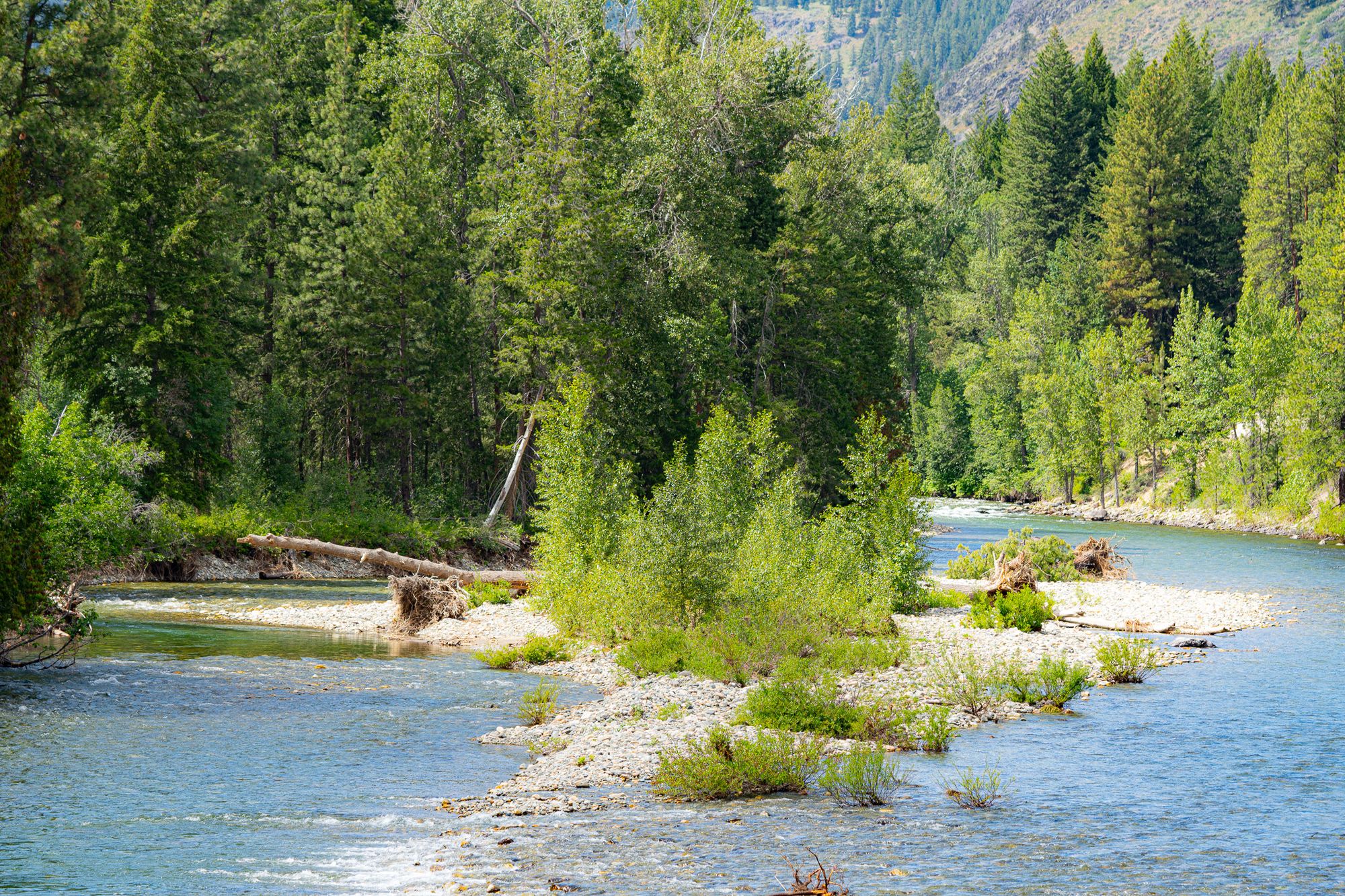June 18-24, 2023
Baby bird season
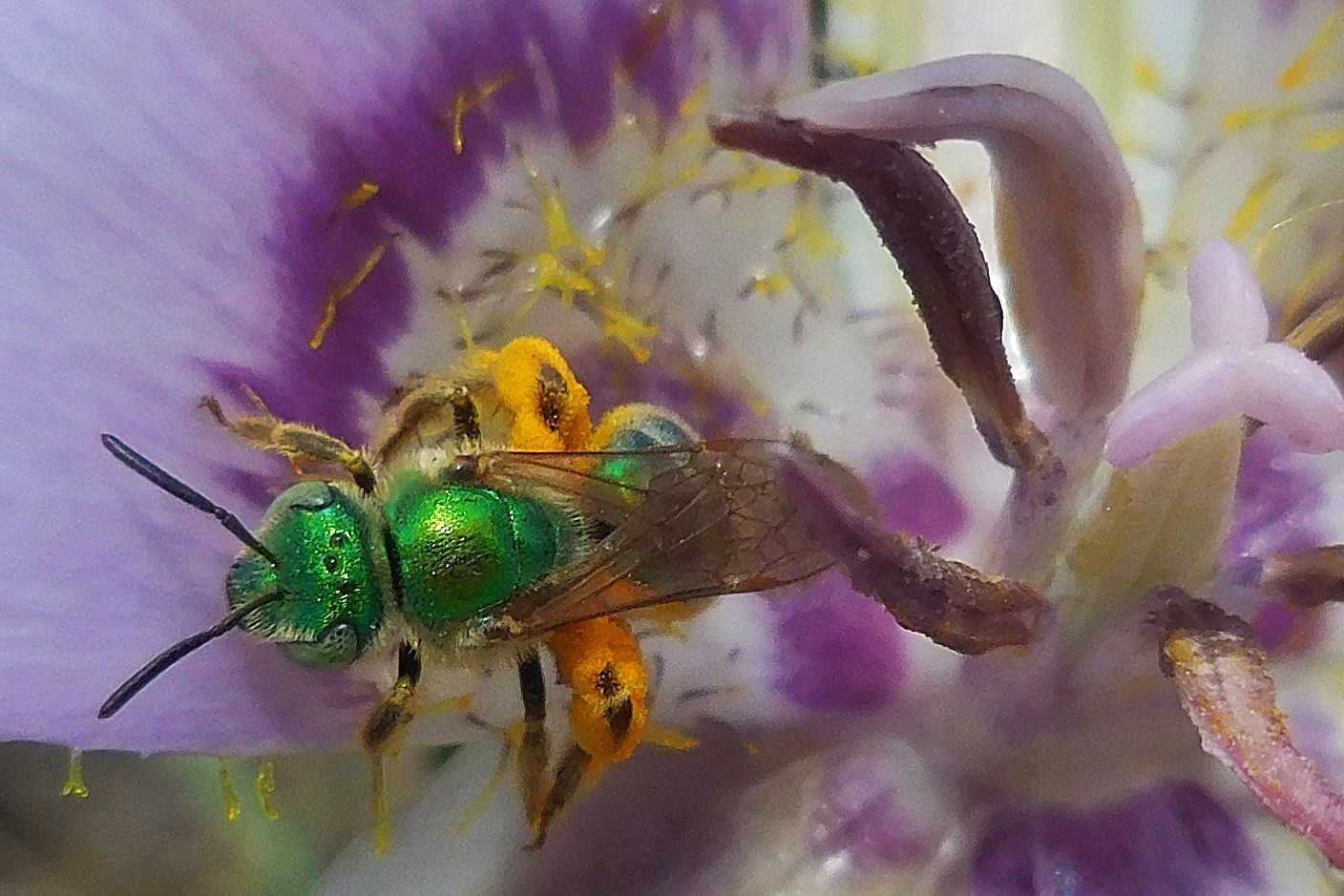
It's been another moody week of clouds and unseasonably chilly days. At the end of the week, temperatures finally climbed from the 60s back into the 70s, but brought passing thunderstorms and spits of rain.
Week in Review
As we head into the long, slow days of summer, it feels like we have to look at bit harder to find moments of life and energy amidst the heat and drying vegetation. But on the flip side, this is a time when babies born in the springtime seem to be making their appearance.
Last week we commented on the arrival of the season's first fawns, but bear cubs have been reported too. The cubs have likely been active for a couple months but maybe they're roaming greater distances and more confidently alongside their mothers?
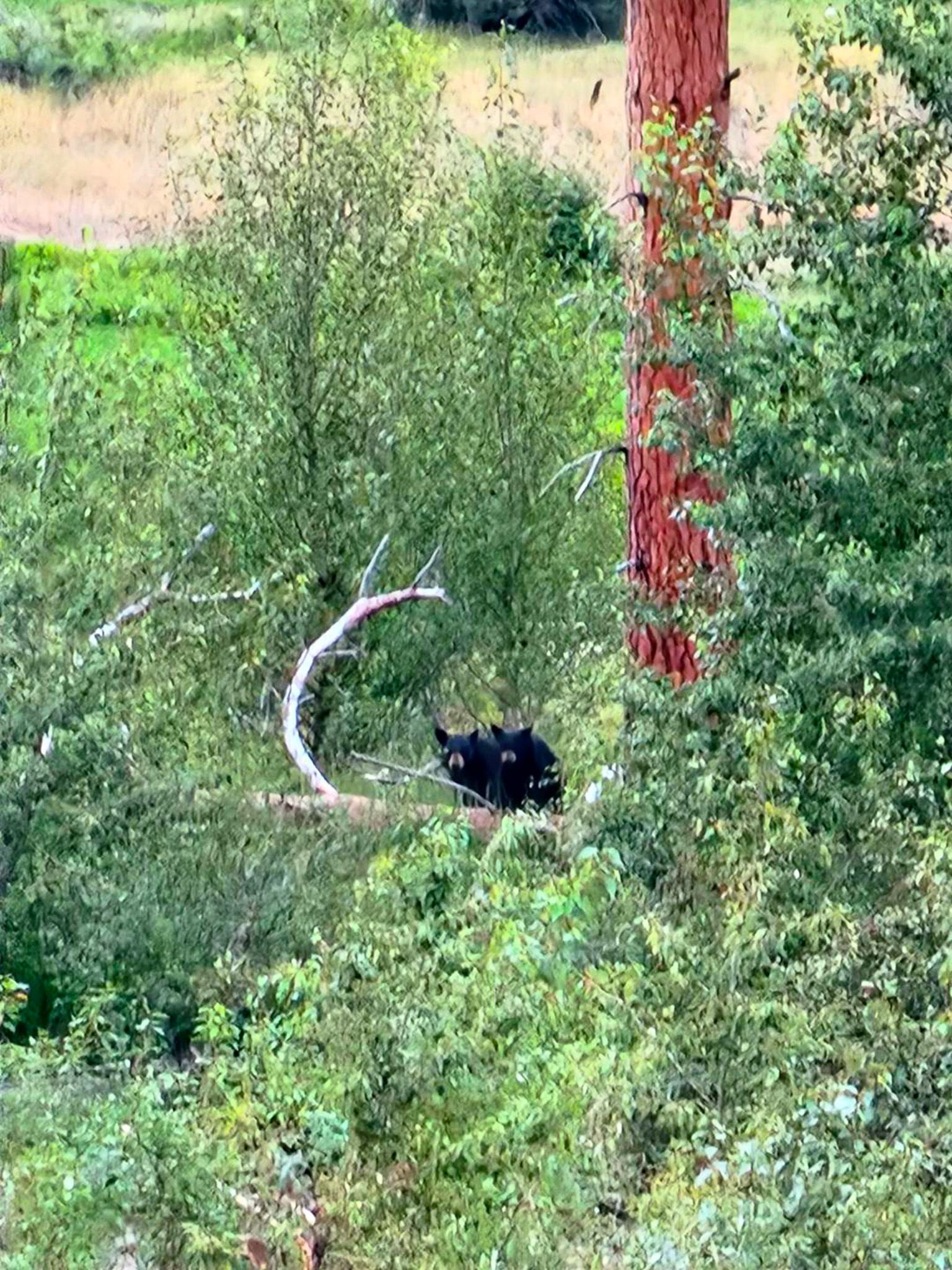
Baby birds are even more conspicuous. Right now in our yard we have a continuous flurry of noise and activity as mountain bluebirds, violet-green swallows, and house sparrows feed their babies, but many other species around the valley are equally busy.
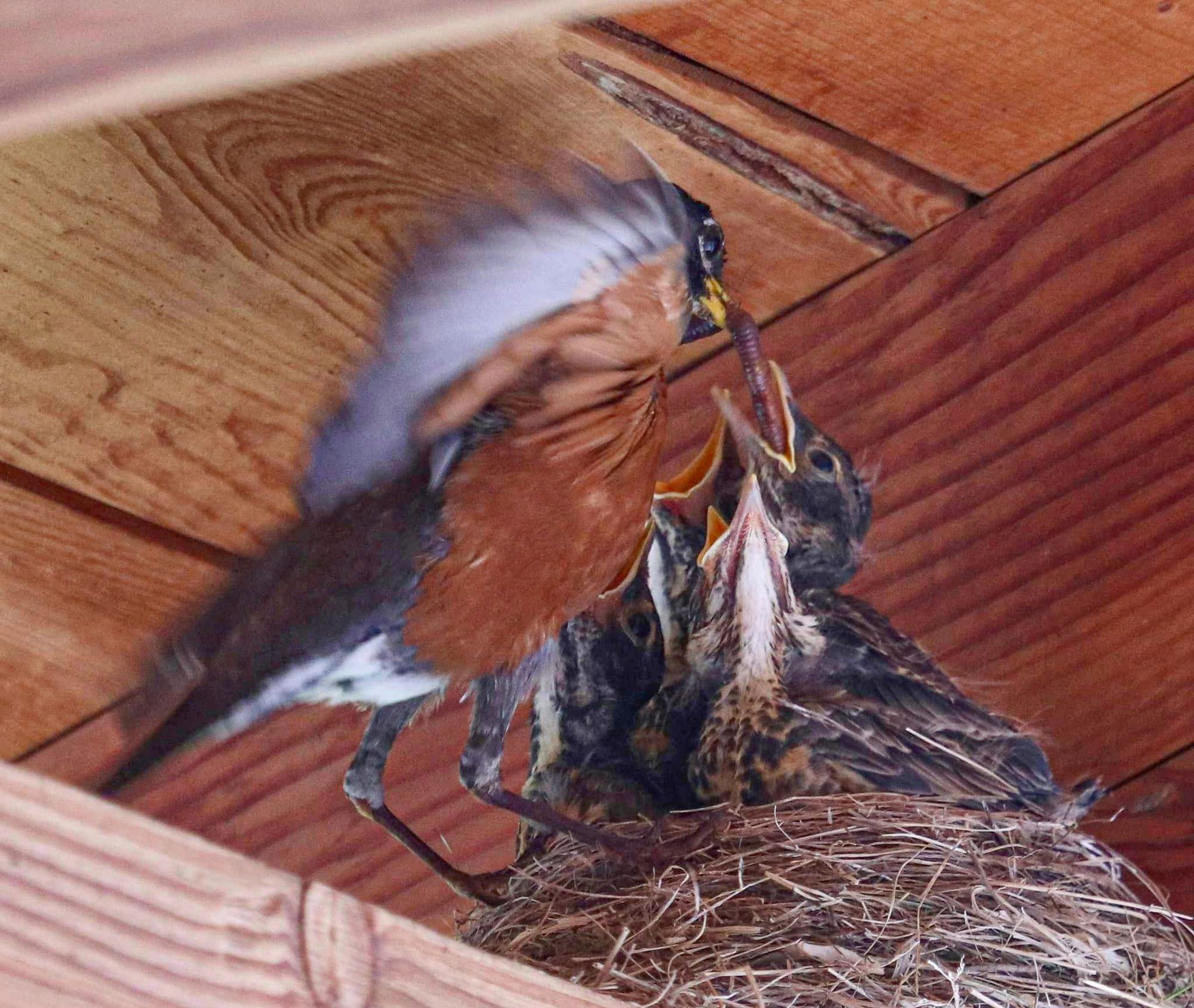
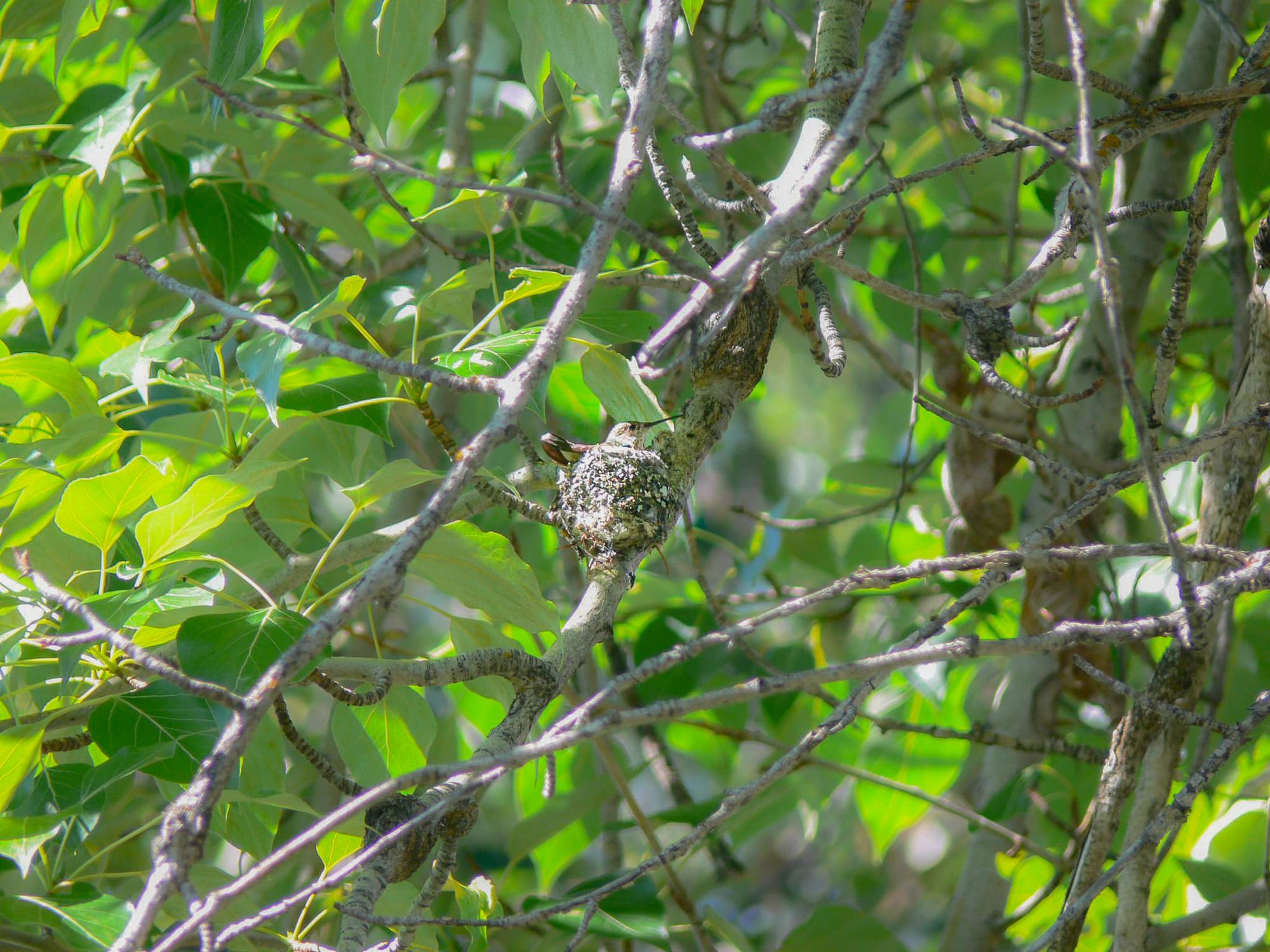
Examples of the many birds being reported right now: American robin (photo by Kari Gilje) and Anna's hummingbird (photo by David Wilkinson)
It takes a closer look but this is also a dynamic time to search for insects. In keeping with the baby theme, it's possible to find newly emerged examples of young insects, and it's fun to find tiny versions of insects that are much larger and more obvious later in the summer.
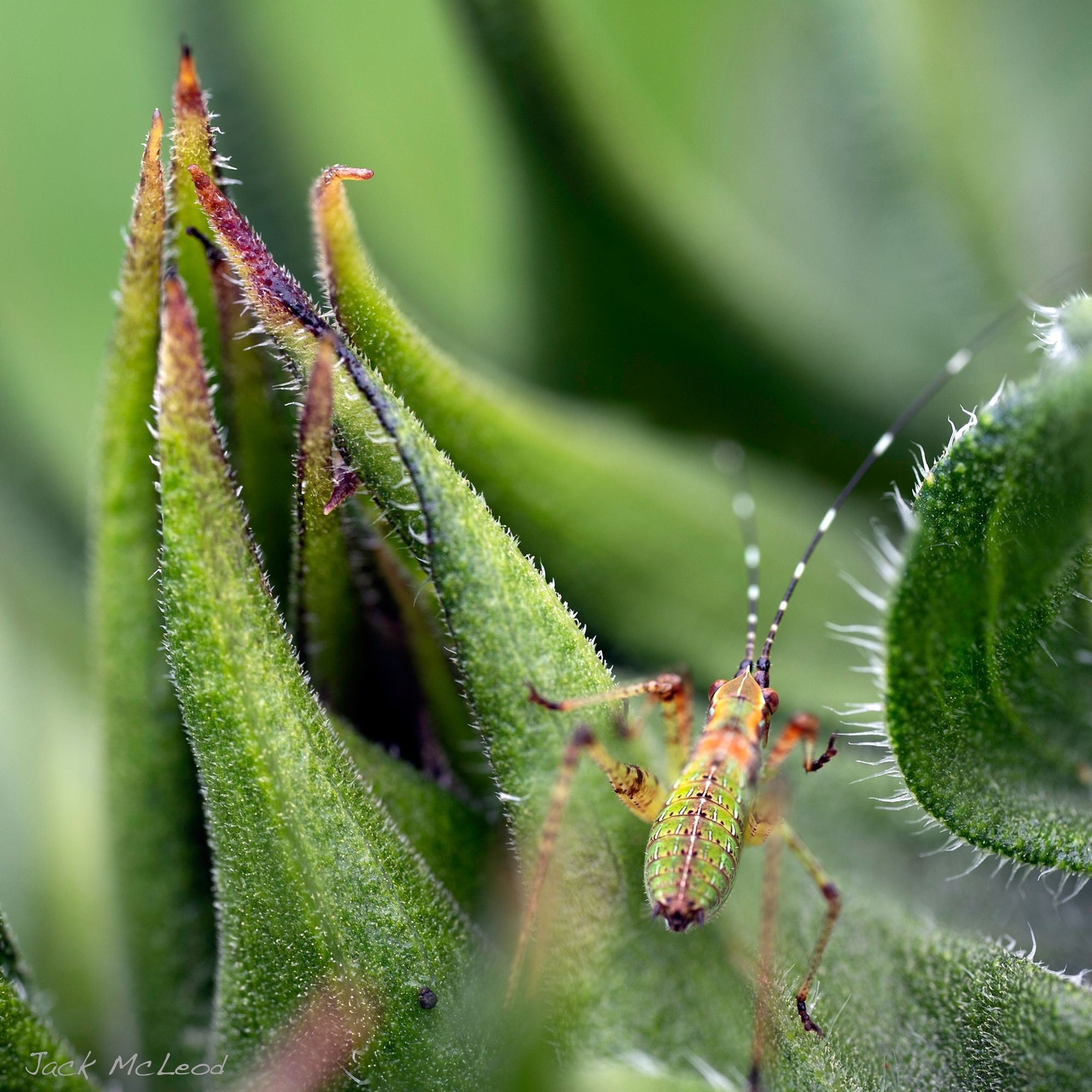
I am endlessly fascinated by the variety of pollinators that can be found on our local flowers, and even on days when it seems like the birds and larger animals are quiet or absent there always seem to be lots of bees, wasps, beetles, flies, and other interesting pollinators gathering around flowers.
Anytime you find some flowers look more closely and see what you can find. The other days, I spotted a "sleeping" wasp on a flower and gently touched it, only to discover that it was being eaten by a crab spider that was the same color as the petals!
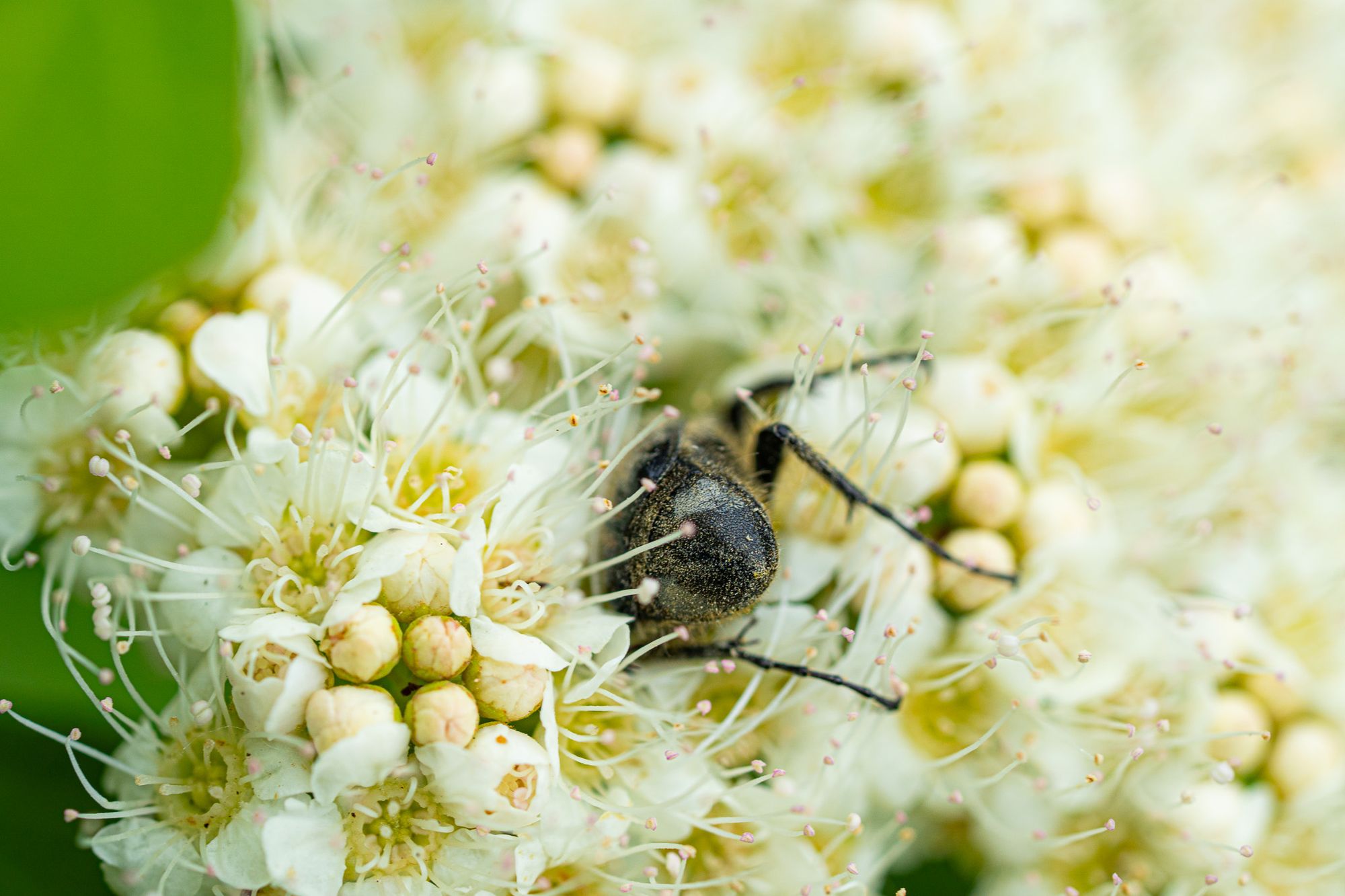
And speaking of surprises, the best sighting of the week was a rarely reported observation of two badgers. Badgers are present, though scarce, in the valley. Some folks have them denning on their land and observe them regularly, but seeing a badger is a dream for most of us because they are wary, mostly nocturnal, and blend into their surroundings.
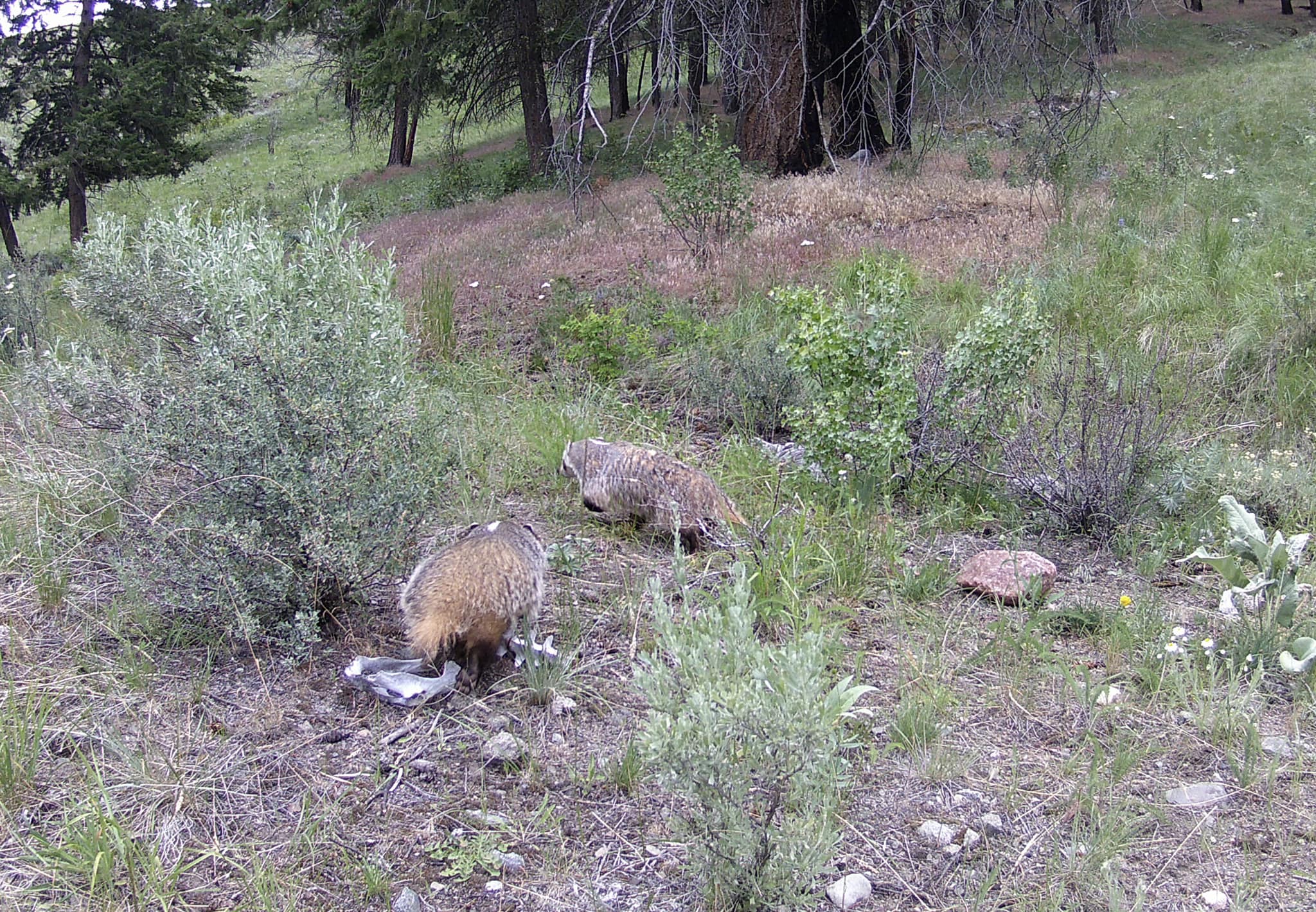
Observation of the Week: Cottonwood fluff
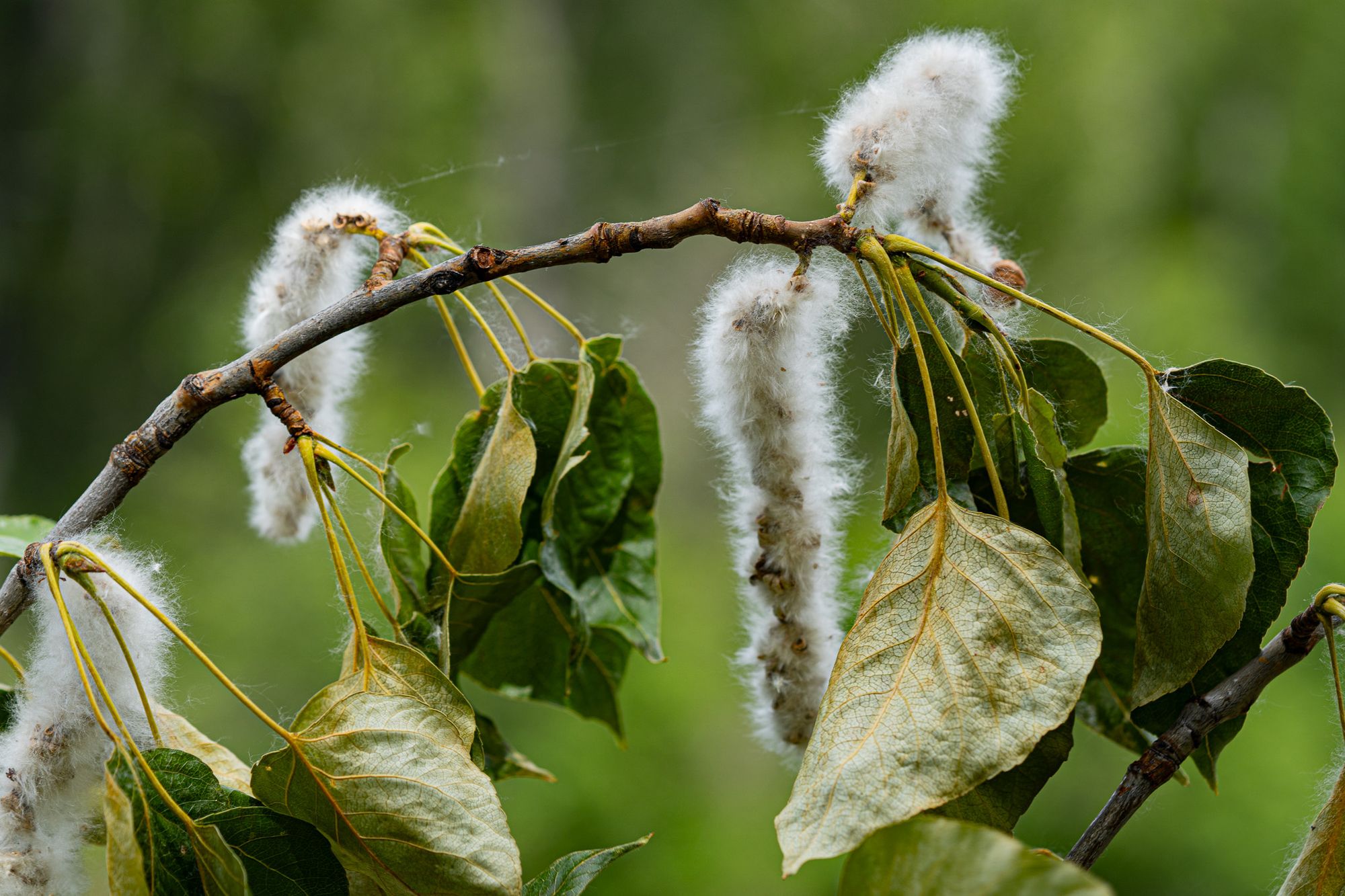
One of the most common and important types of forest in the Methow Valley are the amazing stands of black cottonwood trees that line our rivers.
Cottonwoods are considered a keystone species because their ecological significance far outweighs the number of trees or the area they cover. Not only do they stabilize riverbanks and soil, but they provide homes and habitat for countless plants and animals.
One of the times of year when cottonwoods are most noticeable are when they release immense clouds of tiny fluffy seeds that fill the air and pile up like drifts of snow in sheltered nooks and crannies.
Last week seemed to be the peak time when seeds were released this year, and there was a day this week when the surface of Patterson Lake was so covered with seeds that it looked like the lake had iced over.
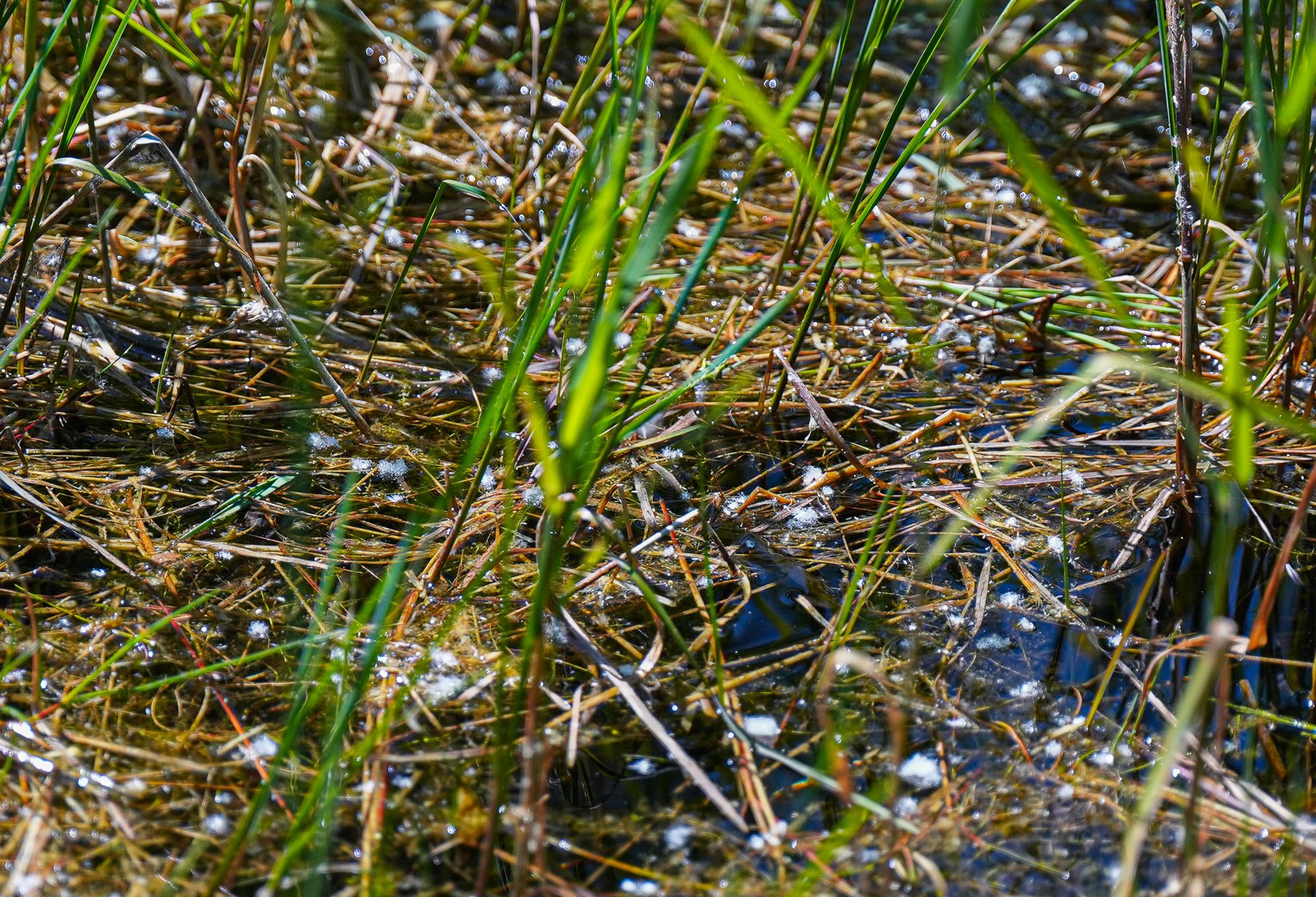
As local naturalist Dana Visalli astutely noted in his recent issue of the Methow Naturalist, these seeds are almost entirely endosperm (where food is stored for seedling growth) so they are only viable for 1-2 weeks.
Even though there are millions of these seeds floating on water or blowing in the wind they must find perfect conditions very quickly or they die. Ideal conditions are best found where sandy soils are freshly exposed (but still wet), as rivers filled with snowmelt begin to recede.
Because these unique conditions are hard to find, and not many seeds land on the right spot with perfect timing, cottonwoods can also spread by sprouting from their roots or from branches that break off.
In fact, cottonwoods can undergo cladoptosis, in which they break off branches that are leafing out so the branches can become established on their own.
We are extremely fortunate to have such extensive and healthy stands of cottonwood forest in the Methow Valley. These trees are not only ecologically valuable but they are also very beautiful!
